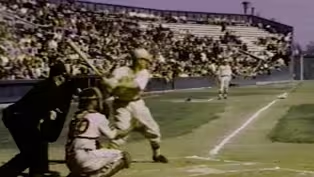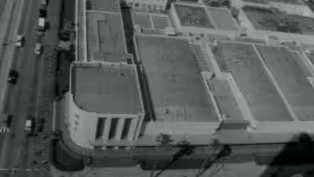
China City
Clip: Episode 3 | 2m 18sVideo has Closed Captions
China City lasted from 1938 to 1948, a themed zone following the example of Olvera Street.
In 1938, Christine Sterling, who had led the creation of the themed Olvera Street, followed with the opening of China City, an adjacent culturally-themed zone. China City lasted about 10 years, after fires led to its closure.
Problems playing video? | Closed Captioning Feedback
Problems playing video? | Closed Captioning Feedback
Things That Aren't Here Anymore is a local public television program presented by PBS SoCal

China City
Clip: Episode 3 | 2m 18sVideo has Closed Captions
In 1938, Christine Sterling, who had led the creation of the themed Olvera Street, followed with the opening of China City, an adjacent culturally-themed zone. China City lasted about 10 years, after fires led to its closure.
Problems playing video? | Closed Captioning Feedback
How to Watch Things That Aren't Here Anymore
Things That Aren't Here Anymore is available to stream on pbs.org and the free PBS App, available on iPhone, Apple TV, Android TV, Android smartphones, Amazon Fire TV, Amazon Fire Tablet, Roku, Samsung Smart TV, and Vizio.
Providing Support for PBS.org
Learn Moreabout PBS online sponsorshipLos Angeles had several Chinatowns but only one China City and only from 1938 to 1948.
It was supposed to be a sister street to Olvera Street, just cattycorner across the old plaza, and it was organized by the same civic-minded developer, Christine Sterling.
She wanted to pay tribute to the Chinese who built the railroads and a lot of Los Angeles with an Oriental showplace.
[Oriental music playing] There was a Chinese temple with burning incense, a rickshaw with driver, long gowns, pigtails, coolie hats, paper lanterns, tinkling Chinese music, chop suey, everything stereotypically Chinese, except a laundry.
Ruby: My dad was a very conservative man, was asked--and he did-- wear a Chinese costume.
I mean, my mother said, when she came over to America, that was the last Chinese dress she wanted to wear.
Because she had come to a new country, she felt she owed it to her host country to be like them.
This is the early immigrant.
For show purposes, everyone wore the little hats, you know, just to give as much atmosphere, and it was really the exoticism that attracted.
It was a tourist attraction.
Benjamin: They had rickshaws.
This was a great gimmick, because they had these young Chinese boys just dressed like they do in China, and they had the rickshaws and the hats and all that, and they would go throughout that whole block.
Ruby: It was all cobblestone.
So, you rickety-ricked all over China City.
You could have a picture taken for another 25 cents.
And I remember an older lady who was very good at selling gardenias.
She used to run around and say, "Gardenia leis!"
And she'd say it in such a fetching way that people would feel, "Oh, this little old lady "should have...you know, we should buy something from her" kind of a thing.
Ralph: After a number of fires, China City finally closed in 1948, and on this corner, China City is just a memory.
Video has Closed Captions
Clip: Ep3 | 6m 32s | For 68 years, the Cocoanut Grove at the Ambassador Hotel was a lavish, 24-acre nightclub. (6m 32s)
Video has Closed Captions
Clip: Ep3 | 3m 22s | Earl Gilmore made his mark in L.A. with Gilmore Oil, Gilmore Field, and Gilmore Stadium. (3m 22s)
Video has Closed Captions
Clip: Ep3 | 1m 57s | From 1938 to 1964, NBC had its L.A. headquarters at the corner of Sunset & Vine. (1m 57s)
Video has Closed Captions
Clip: Ep3 | 3m 54s | Opened in 1932, Schwab's Pharmacy was a famous Hollywood meeting place. (3m 54s)
Providing Support for PBS.org
Learn Moreabout PBS online sponsorshipSupport for PBS provided by:
Things That Aren't Here Anymore is a local public television program presented by PBS SoCal



















